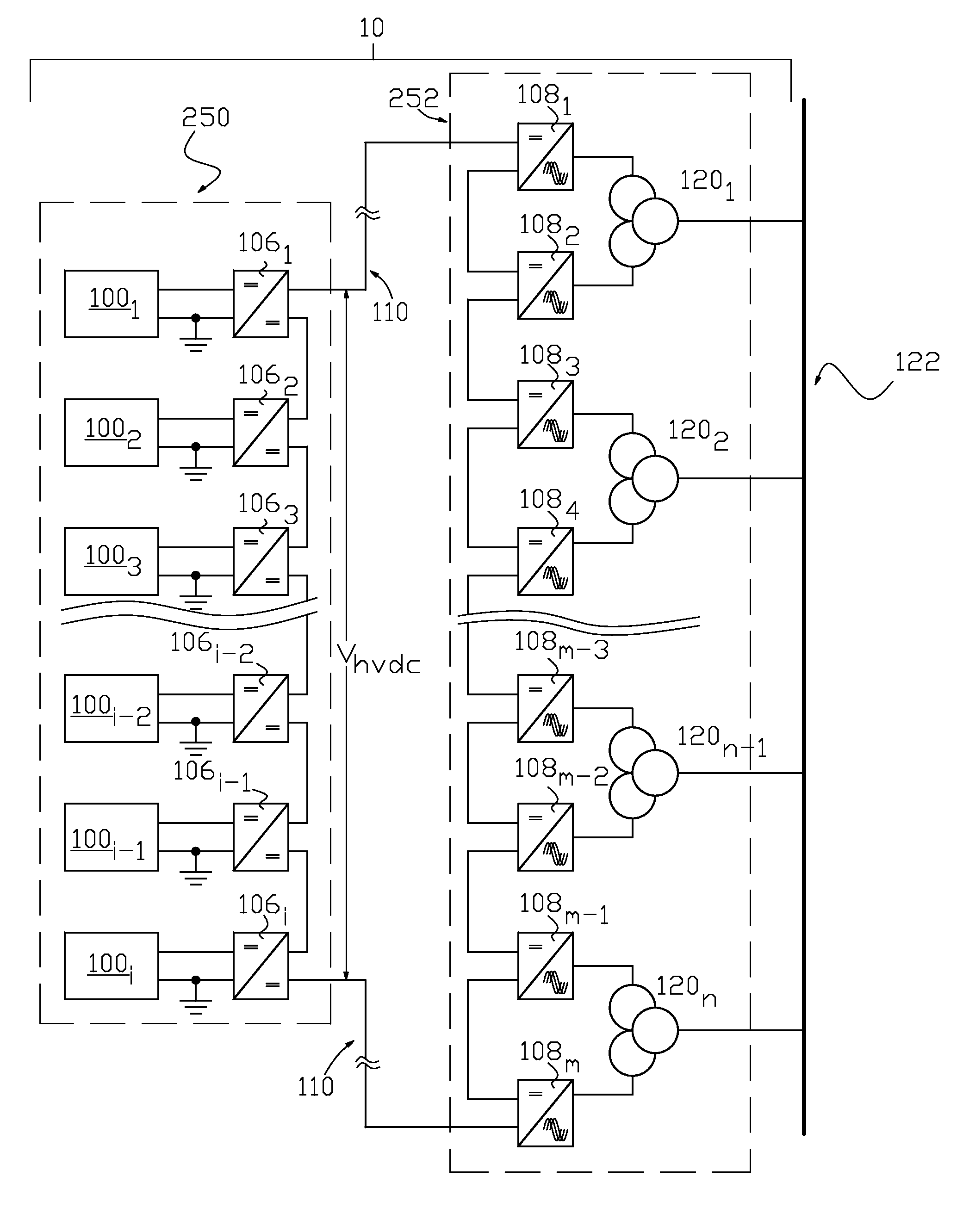Solar Photovoltaic Power Collection via High Voltage, Direct Current Systems with Conversion and Supply to an Alternating Current Transmission Network
a technology of solar photovoltaic power collection and direct current, which is applied in the direction of pv power plants, dc network circuit arrangements, dc-ac conversion without reversal, etc., can solve the problems of significant contiguous area of solar pv power collectors
- Summary
- Abstract
- Description
- Claims
- Application Information
AI Technical Summary
Benefits of technology
Problems solved by technology
Method used
Image
Examples
Embodiment Construction
[0029]FIG. 2 illustrates one example of an arrangement of apparatus 10 of the present invention for solar photovoltaic DC power collection, conversion to AC power, and supply of the AC power to a transmission network. Solar power collection nodes 1001 through 100i are each connected to a respective node-isolated step-down current regulator 1061 through 106i, where “i” is a positive integer. Each solar power collection node (generally referred to by reference number 100) comprises a plurality of solar PV power collectors 1021 through 102j having their DC outputs, Vcol, connected together in parallel as shown in FIG. 3. The variable “j” may be any positive integer, and can be a different integer value for the plurality of solar PV power collectors in each distinct solar power collection node 100. A typical solar PV power collector (generally referred to by reference number 102) is illustrated in non-limiting physical and electrical schematic form in FIG. 4 and FIG. 5 respectively. Ref...
PUM
 Login to View More
Login to View More Abstract
Description
Claims
Application Information
 Login to View More
Login to View More - R&D
- Intellectual Property
- Life Sciences
- Materials
- Tech Scout
- Unparalleled Data Quality
- Higher Quality Content
- 60% Fewer Hallucinations
Browse by: Latest US Patents, China's latest patents, Technical Efficacy Thesaurus, Application Domain, Technology Topic, Popular Technical Reports.
© 2025 PatSnap. All rights reserved.Legal|Privacy policy|Modern Slavery Act Transparency Statement|Sitemap|About US| Contact US: help@patsnap.com



